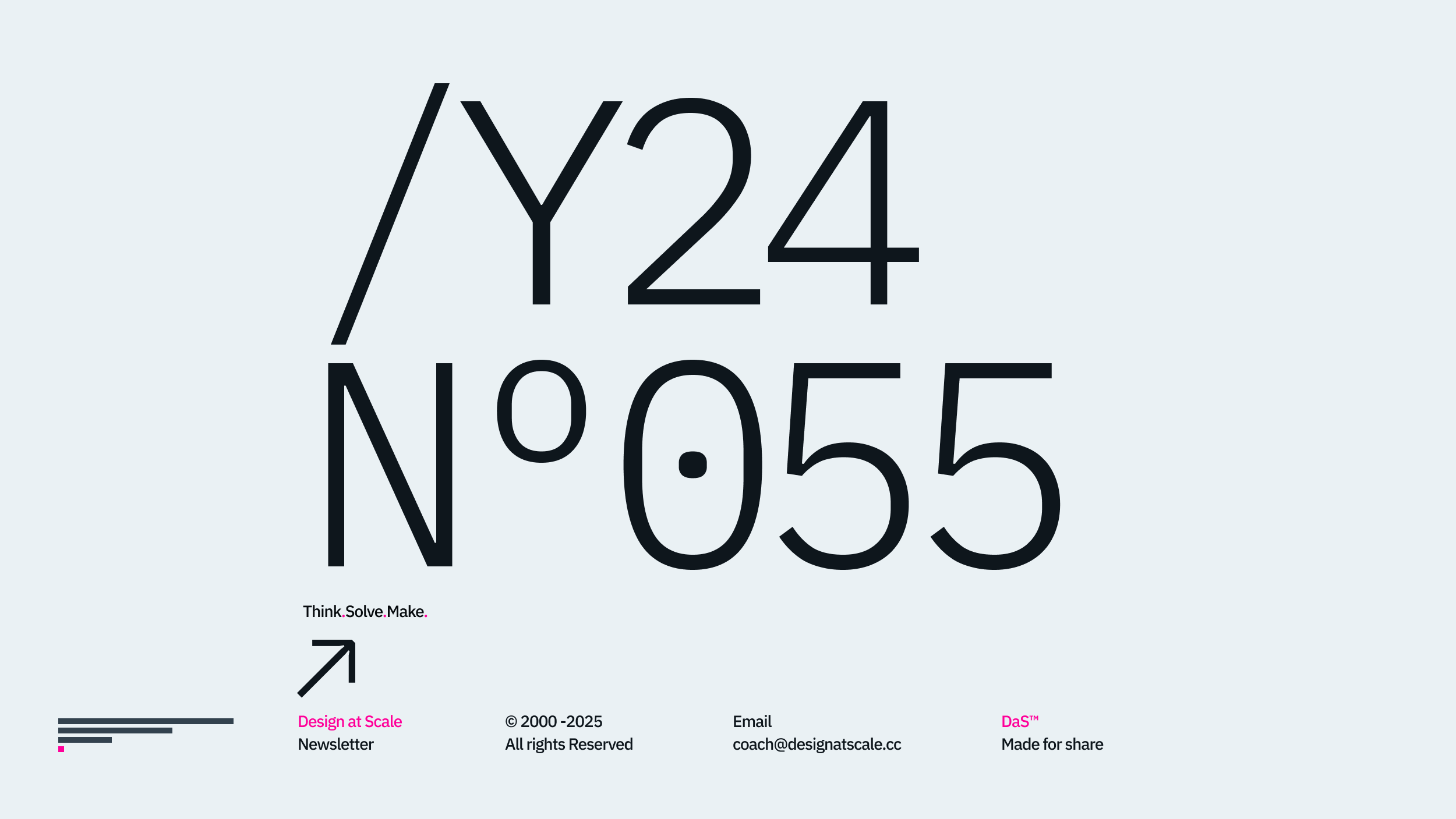Thank you for stopping by and dedicating your time to learning something new about design. Design at Scale™ – is an ambition to unify all designers under the umbrella, offering clarity, stability and transparency for complex design propositions.
Every day, we hear about new quotes, methods, processes, or software that enhance a designer’s life or improve the business. Yet, after reaching a fully remote era, we discover that a newly established design team is under constant pressure on how all the above works together in synergy within a broader context of the already established or new business.
Design at Scale™ is not a magic formula, quick win, or something you can get off the shelf for a few bucks. It’s a comprehensive method that takes time to master and embrace internally as a team or business. However, once we all reach the point of mastery, the scale and impact go far beyond what we know.
We often ask:
What is the ultimate design value to the business and the customer? What is the intersection of skills, techniques or understanding design needs to possess and succeed in the current constantly demanding and changing markets?
Far too many teams suffer the consequences of poorly integrated design functions in current organisational structures. Inadequate methods are used in the usually wrong context where plans and ambitions are judged by an ambiguous output instead of measurable outcomes.
We are here to change that:
After 25+ years of designing and collaborating in both agency and product-led environments, we’ve distilled – Design at Scale™. DAS™ – is the method that orchestrates all greater integrations of a design as a function that helps businesses to thrive in the era of constant change.
Welcome to Design at Scale™ – the Grid Publication you entered right now has been set up to focus on the design that scales up. The design function within an organisation is primarily defined by clear and transparent communication and building a resilient and well-functioning design team that utilises the technology in the centre and challenges the operation models that work for particular situations.
Our ambition for this publication is to bring stories, case studies, and research papers analysis from various unique and well-rounded sources that deserve our attention. After almost a year of organising two decades of research, we have settled on these four categories:
Categories
Communication
This category focuses on how we designers communicate as individuals and within larger teams. We‘ll look at the case studies that help design teams break the silos and create a transparent product team.
Team
The second category is about team and team building. There are some specific to each design team and each company. However, building the design functions within the company and its successful integration with product Delivery lies in the design team itself. Equally, how does the design team of teams operate under a different implementation of the Agile development framework?
Technology
Designers have created static graphics for over two decades representing dynamic, responsive environments. We’ll look at the technology and software solution that helps the team deliver design at scale in this category. The criteria here is quite simple can scale my design (system, mockups, test, prototypes) from 30 to 3000 without losing control over the design delivery.
Operation
Finally, all the above becomes a comprehensive delivery system that can be easily understood, translated, and scaled. More importantly, it integrated with any other team that requires the updates, insides or directly depends on the feature, project, or product to be shared.
Happy scaling through design!
Hey, I’m Jiri Mocicka.
London-based Design Director, Trusted Advisor and Author of Design at Scale™. The method that empowers individuals to shape the future organisation through design.
If you have a question, join our Community and reach out to like-minded individuals who scale design propositions. An online Academy can help you to find your feed in teams of 01, 10, and 100, supported by Grid Magazine and Supply section, where we weekly bring more insights on how to become a design leader in your organisation.











